Mobihel Paint Hardener

Mobihel Professional Paint Hardener
-
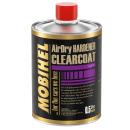 40119801Air-drying Clearcoat HardenerAirdry 0.5L
40119801Air-drying Clearcoat HardenerAirdry 0.5L -
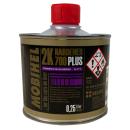 402166012K Hardener 700 PLUS0.25L - standard
402166012K Hardener 700 PLUS0.25L - standard -
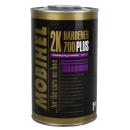 402166022K Hardener 700 PLUS1L, standard
402166022K Hardener 700 PLUS1L, standard -
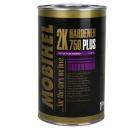 402168022K Hardener 750 PLUS1L, Extra Fast
402168022K Hardener 750 PLUS1L, Extra Fast -
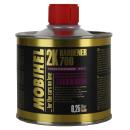 418256212K 700 Hardener0.25L, for wet/wet primer
418256212K 700 Hardener0.25L, for wet/wet primer -
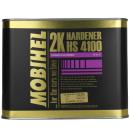 419583132K High Solid 4100 HardenerFor Clearcoat, 2.5L, standard
419583132K High Solid 4100 HardenerFor Clearcoat, 2.5L, standard -
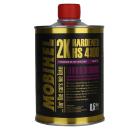 419583812K High Solid 4100 HardenerFor Clearcoat, 0.5L, standard
419583812K High Solid 4100 HardenerFor Clearcoat, 0.5L, standard -
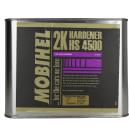 47088813High Solid 4500 2K HardenerFor Clearcoat, 2.5L, Fast
47088813High Solid 4500 2K HardenerFor Clearcoat, 2.5L, Fast -
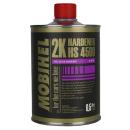 47088821High Solid 4500 2K HardenerFor Clearcoat, 0.5L, Fast
47088821High Solid 4500 2K HardenerFor Clearcoat, 0.5L, Fast -
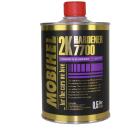 471554012K 7700 Hardenerstandard 0.5L
471554012K 7700 Hardenerstandard 0.5L -
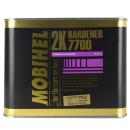 471554032K Hardener Standard 77002.5L for Clearcoat ECO
471554032K Hardener Standard 77002.5L for Clearcoat ECO -
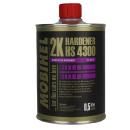 47774901High Solid 2K Hardener 4300For Clearcoat: 0.5L Slow
47774901High Solid 2K Hardener 4300For Clearcoat: 0.5L Slow -
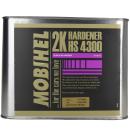 47774903High Solid 2K Hardener 4300For Clearcoat, 2.5L slow release
47774903High Solid 2K Hardener 4300For Clearcoat, 2.5L slow release -
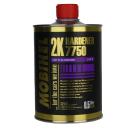 479012012K Hardener 7750Rapid 0.5L
479012012K Hardener 7750Rapid 0.5L -
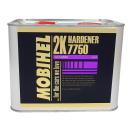 479012032K Quick Hardener 77502.5L for Clearcoat ECO
479012032K Quick Hardener 77502.5L for Clearcoat ECO
︾
The various Paint Hardeners from the Slovenian brand Mobihel :
Paint hardeners play an essential role in the automotive coating process, offering crucial properties such as durability, resistance and fast drying. Let's take a closer look at some types of hardener and their specific applications:
Paint hardener for hydro base:
Water-based paints are becoming increasingly popular due to their environmental benefits. Paint hardeners specifically formulated for hydro bases are designed to react effectively with this type of paint. They ensure complete hardening while preserving the ecological characteristics of water-based paint.
Versatile Paint Hardener :
Ideal for professionals looking for flexibility, multi-purpose Paint Hardeners are compatible with different types of paint. They offer a practical solution for those who use a variety of paint formulations, simplifying the process while ensuring optimum curing.
Paint Hardener for car colour codes:
Tint accuracy is crucial in car bodywork, and specific colour code paint hardeners ensure a perfect match. These paint hardeners are often used with custom paints, allowing professionals to accurately reproduce a vehicle's original shade.
Paint Hardener for Clearcoats:
The protection and shine of a car's paintwork depend largely on the Clearcoat. Dedicated Clearcoat Hardeners contribute to efficient curing, ensuring a hard, scratch-resistant surface. This is essential to preserve the shine of the paint over time, even in difficult environmental conditions.
Choosing the right Paint Hardener is crucial to ensuring optimum results. Manufacturers generally provide specific recommendations in terms of Mixing ratios and application conditions. It's important to follow these guidelines to maximise the durability, aesthetic quality and resistance of your car paint. Whether you're working on a hydro base, a custom tint, or a Clearcoat, choosing the right Hardener for your paint will go a long way to ensuring the success of your bodywork project.
How to use Paint Hardener in bodywork :
When it comes to applying paint hardeners in the bodywork industry, many questions naturally arise, reflecting the constant quest for impeccable, long-lasting results. Here are some of the questions most frequently asked by users in this context:
Which Paint Hardener should I choose for my paintwork?
This question highlights the importance of compatibility between the Hardener and the type of paint used. Users often wonder which paint hardener is best suited to their application, whether it's for a hydro base, a custom tint or a Clearcoat.
What is the optimum mixing ratio?
The precise balance between paint and Hardener is crucial to ensure optimum curing. Users ask about the Mixing ratios recommended by manufacturers and how to stick to them to achieve quality results.
How can drying time be adjusted to suit environmental conditions?
Variations in temperature and humidity can influence the curing process. Users are looking for advice on how to adjust the drying time to suit the ambient conditions to avoid complications such as drying too quickly or too slowly.
How long does the paint-hardener mix last?
The life of the paint-Hardener mixture is a common concern. Users want to know how long the mixture remains usable after it has been prepared, thus minimising material wastage.
How can paint hardener problems such as over-curing or under-curing be avoided?
Incorrect application of Hardener can lead to problems such as surfaces that are too hard and brittle or, conversely, soft and vulnerable. Users are looking for advice on how to prevent these problems.
Are there paint hardeners adapted to specific applications, such as putties or custom colours?
The application of Paint Hardeners varies according to the type of paint or surface to be treated. Users ask about the availability of specific paint hardeners for particular applications, such as putties or custom colours.
By answering these questions, users aim to maximise the efficiency of their painting process, ensure quality finishes and extend the durability of their bodywork projects. Following the manufacturer's recommendations, learning about the specifics of each paint hardener and adjusting the process to suit environmental conditions are all key to the successful application of paint hardeners.
Mixing paint and hardener: how do you do it right?
Mixing paint and Hardener in bodywork is a crucial step in achieving quality paint results. The exact instructions can vary depending on the brand and type of paint you're using, so it's important to follow the manufacturer's specific recommendations. However, here's a general guide to help you make a paint-hardener mix:
Materials required for mixing Paint Hardener:
1. Body paint
2. Suitable Paint Hardener
3. Mixing bucket
4. Mixing ruler
5. Measuring balance or measuring cups
6. Spray gun
7. Paint filters
8. Protective mask
Steps to follow :
1. Choose the right Paint Hardener:
Make sure you use the Paint Hardener recommended by the paint manufacturer. Paint hardeners can vary depending on the type of paint (solvent-based, water-based, etc.) and the brand.
2. Read the manufacturer's instructions:
Before you start, read the paint and paint hardener manufacturer's instructions carefully. Mixing ratios and other specific recommendations will be specified.
3. Prepare your work area:
Make sure you are working in a well-ventilated environment. Wear a protective mask, gloves and safety glasses.
4. Measure the amount of paint required:
Use a measuring scale or measuring cups to measure the correct amount of paint for the surface you want to paint.
5. Add the Paint Hardener:
Using the Mixing ratio recommended by the manufacturer, add the Hardener to the paint. Use a clean mixing cup and stirrer to thoroughly mix the two components.
6. Shake well:
Mix the paint and Hardener vigorously until a homogeneous consistency is obtained. Make sure the mixture is uniform to ensure proper curing.
7. Filter the mixture:
Use paint filters to remove impurities and particles that could affect the finish. Transfer the filtered mixture into the cup of the Spray gun.
8. Adjust the Spray gun:
Follow the manufacturer's recommendations to correctly set your Spray gun in terms of air pressure and paint flow.
9. Apply the paint:
Once the mixture is ready, apply the paint to the surface to be painted using the correct spray techniques.
10. Clean the equipment:
After you've finished, thoroughly clean your Spray gun and any other tools you've used.
It's vital to follow the manufacturer's instructions and to carry out preliminary tests on similar surfaces to ensure that the Paint-Hardener mixture works properly. If in doubt, don't hesitate to consult a bodywork professional for advice specific to your project.